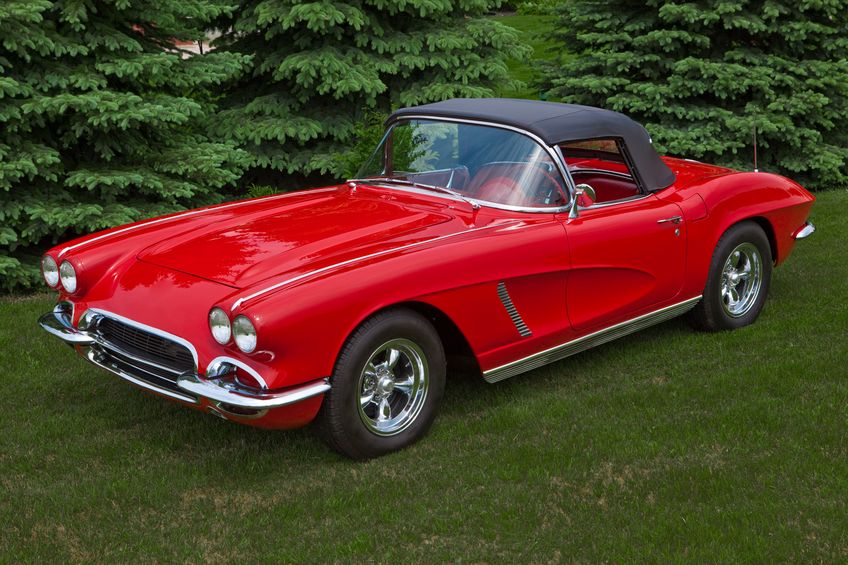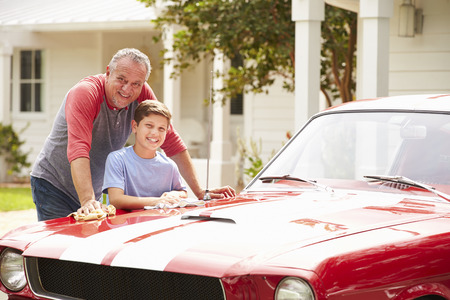There’s just something appealing about a classic car. Perhaps it’s the beauty or that it’s rare. Maybe it’s the engineering or history. It could be the memory of one owned in the past or what it represents. Here are some posts about classic cars that you may find interesting.
Classic Cars: Elements of Classic Car Insurance
If you have a vintage vehicle, you want to make sure that you’re protecting it as much as possible. This ride signifies a massive investment on your part, so you have to make sure that you’re getting the coverage you need.
When picking out a policy for your classic car, here are some things to keep in mind.
Agreed Value
With most auto insurance plans, the policy covers the cost of a replacement. However, for a classic car, you can’t just go to any dealership and buy a new one. Thus, you will want to talk to your agent and make sure that you’re both on the same page about what the car is worth.
Another thing about agreed value is depreciation. Most vintage models get more valuable over time, meaning that you’ll want to reassess its worth on an annual basis. Keeping this figure up to date will ensure that you’re fairly compensated in case something happens.
Low-Mileage Coverage
Do you drive your classic car? If so, how often are you on the road? In most cases, these vehicles are usually driven on a minimal basis, which means that you’re not putting it at risk. Most insurance companies will give you great rates because the chances of getting into a collision are minimal. Be sure to track your mileage and provide an estimate when drafting a policy.
Roadside Assistance
If you are driving your classic car and it breaks down, you want to make sure that you can tow it to a qualified auto shop for repairs. Since most mechanics don’t specialize in vintage models, you may have limited options. Thus, when adding roadside assistance to your policy, talk to your agent about coverage for longer towing distances if necessary.
Getting insurance for your classic ride is crucial. Because this car is not like any other, you have to be sure that your policy covers everything. We understand what components to include in this type of plan, so contact us today to get started.
Classic Cars: Do You Own a Classic Car of the Future?
For some people, nothing compares to driving a classic car of the golden age of autos. Whether you have a vintage racer like a 1963 Aston Martin or something a bit more rugged like a 1969 Dodge Charger, the feeling of taking it out on the road is indescribable.
Unfortunately, as we go deeper into the modern age, finding these antique rides is only going to be more and more difficult. However, that doesn’t mean that you can’t find yourself in a classic vehicle.
Think about it like this – when people were driving their cars in the 1950s and 60s, they didn’t realize how much they would be worth in 40 years. So, imagine how much your current car may be valued in another 40 or 50 years.
But how can you know which make and model will be revered as a classic? Thankfully, according to the experts at CNET’s Car Tech Magazine, these 10 autos will probably be fetching high prices in the future.
- ‘03-06 Infiniti G35
- ‘97-03 Toyota Prius (1st Generation)
- ‘08-09 Pontiac G8
- ‘99-06 Honda Insight (1st Generation)
- ‘04-06 Scion xB
- ‘99-07 Toyota MR2 Spyder
- ‘00-09 Honda S2000
- ‘04-08 Dodge Magnum
- ‘05-11 Chrysler 300C
Even if you don’t currently own any of these cars, they are much more affordable now than when they receive their “antique” status. Also, if you pay attention to what makes these vehicles so desirable, you can figure out which new model will become a classic someday. Typically speaking, look for any design or trim that has a limited run, or any car that gets discontinued. The harder it is to find and the higher quality it is, the better it will age.
Also, consider getting insurance for your soon-to-be vintage ride. Contact Bob Johnson Insurance today to get a free quote! We also cover current antique vehicles, so be sure to see what rates we can offer you.
Classic Cars: Have Fun at a Classic Car Show
If you’ve ever been to a classic car show, then you know that it can be an exciting experience. Getting to see such beautiful and elegant vintage cars is always a treat, but the show itself can be a bit overwhelming, especially if you don’t know what to expect.
Follow these tips and tricks, and you’ll come away with positive memories, not negative experiences.
Bring the Family
Classic cars appeal to everyone, not just collectors. Most of these shows are in public venues, making them a fun way to spend the day with your family. Also, having kids in tow can help add to the excitement as they thrill over the classic models on display.
Plan an Itinerary
While these events can be enjoyable without any set schedule, it’s best to have something in place before you go. You can always make adjustments on the fly, but creating an itinerary will help you make the most of the show. For example, if some exhibits or showcases happen at certain times, you can be sure to catch all of the ones you want without missing anything.
Be Early
Whether it’s the show itself or a particular exhibit, showing up early will alleviate a lot of the stress that can occur. Not only will you not have to wait in line for as long, but you can pack more into the day because you’re not running against the clock.
Be Prepared
Some of these shows can be quite massive. That means a lot of walking. If you’re not up for that, you won’t enjoy the experience as much. In addition to being ready for the physical aspect, be sure to consider pit stops and hydration along the way. Bring a bag with snacks and drinks (and sunscreen) so that you’re ready for anything.
When the next classic car show comes to town, you’ll be ready to enjoy it in all its splendor. Being prepared will ensure that you’re always ready for whatever happens.
Related Posts
Things You Need to Know About Classic Car Insurance
Did you know?
If you have a classic that’s been collecting dust because you haven’t wanted to pay for the insurance, you have low-cost insurance options to get it on the road. Get a competitive classic car insurance quote.
If you own a “classic” car, which could be considered anything over about 25 years old, you could save money on your car insurance by buying specialized classic car insurance.
There are two ways to find insurance for your older vehicles. The first is to check with your current insurance company to see if they have a rating classification for classic or antique autos. This rate will be significantly less than a pleasure use rate, but it may also come with some mileage or usage limitations.
The other way to insure your classic car is to use an insurance company that specializes in insuring restored vehicles. Their policies have unique coverages that may not be available with an ordinary car insurance policy. Here’s a breakdown of some of the categories of classic vehicles for which you might want special coverage:
- Antique & Classic Cars – Consist of stock vehicles built from the turn of the century through approximately 1969. Examples include a 1957 Ford Thunderbird, 1901 Oldsmobile and a 1930 Model A.
- Exotic and Special Interest – These are rare or limited production vehicles such as specific models of Lamborghini, Ferrari and Dodge Vipers.
- Lowriders – Cars modified with hydraulic or air bag suspension systems can often be insured as classic cars, but underwriting guidelines are strict.
- Modern Classics – These are vehicles of modern production that are considered collectible such as a 1976 Chevrolet Corvette, a 1978 AMC Pacer or a 1979 Trans Am T-Top.
- Motorcycles and Scooters – Motorcycles are becoming increasingly expensive and thus collectible. Examples of motorcycles insurable as collectibles are a 1948 Indian Chief and a 1952 Harley Panhead.
- Muscle Cars – Typically late 1960’s and early 1970’s U.S. models that include larger V-8 engines. Examples include a 1969 Chevrolet Camaro, 1970 Dodge Charger and a 1970 Plymouth Barracuda.
- High Quality Replicas – The are home-built or professionally constructed replicas of older vehicles.
- Street Rods – Street rods include vehicles that have been extensively customized for performance. Examples include a 1932 Ford Highboy or a chopped 1951 Mercury Coupe with custom paint.
- Trucks or Pick-ups – Older models of trucks can be insured as a classic vehicle just as a car can be. Examples include a 1922 Model T Truck, a 1951 Chevy Pickup or even a 1975 Ford Pickup.
- Vehicles Under Active Restoration – Even if you haven’t gotten the primer and paint complete, you can insure your classic while being restored.
Advantages of Classic Car Insurance
The typical classic car insurance policy offers better coverage at a reduced premium than a typical auto insurance policy. This is due to the fact that most classics are not driven as much or under the same circumstances as your regular vehicles. The policies may allow only a certain number of annual miles driven, but the return is a greatly reduced premium for insuring your classic car.
Typical benefits of the classic car insurance policy include:
- Lower premiums
- Agreed value coverage – this means your car is insured for a specific value that you will be paid in the event of a total loss
- No deductible – many classic car policies do not have a deductible, so you will not have to pay anything out-of-pocket in the case of a claim
If you have a classic that’s been collecting dust because you haven’t wanted to pay for the insurance, you have low-cost insurance options to get it on the road. Get a competitive classic car insurance quote.


